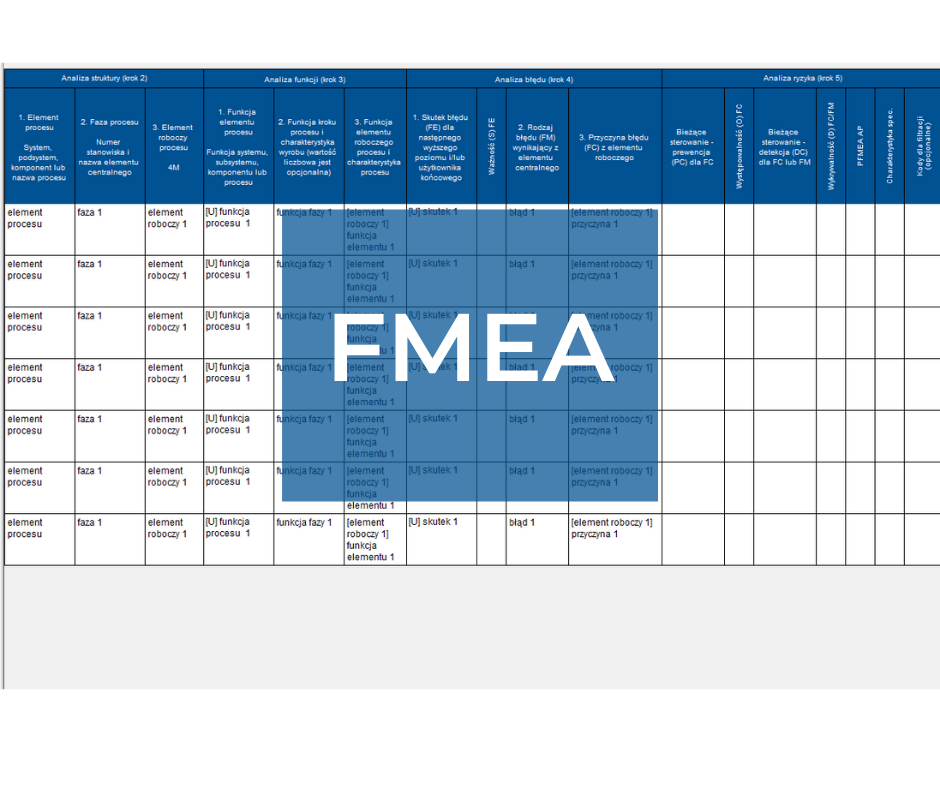
Training can be focused on a DFMEA or PFMEA analysis. Training participants will learn how to work with the method using practical examples. The prepared workshops will also allow you to acquire skills in defining non-conformities, describing prevention and control, and planning actions to reduce the risk.
CONTENTS:
CONTENTS:
EXERCISES:
EXERCISES:
EXERCISES:
CONTENTS:
EXERCISES:
The training was designed on the basis of both the requirements of the new FMEA analysis manual issued by AIAG and VDA and the standards currently in force. During the training, PROQUAL trainers will provide participants with their knowledge resulting from their extensive experience in the area of moderating risk analyzes in various industries.
The training is tailored to the needs and specifics of the enterprise in which the participants of the classes work, so that the discussed examples can be later implemented while conducting own analyzes.
After the training, each participant will receive a certificate confirming completion of the training.
People responsible for conducting FMEA analyzes, process engineers responsible for their improvement – People who do not know FMEA and want to learn to conduct this analysis at a basic level.
PROQUAL Management Institute
B. T. Greber Spółka Jawna